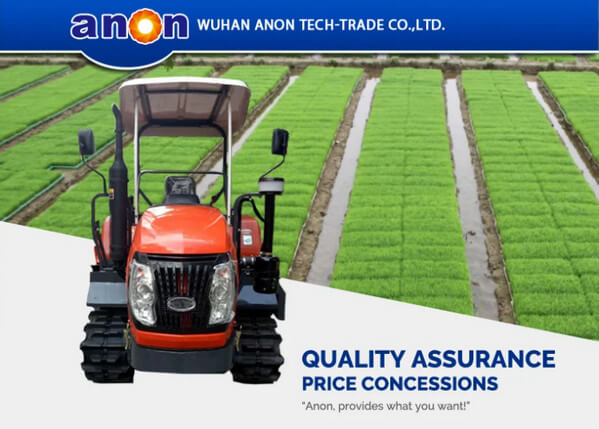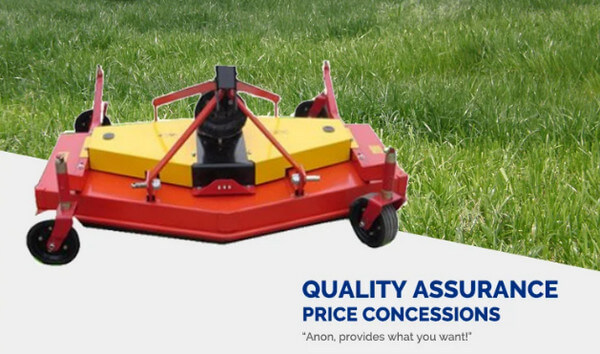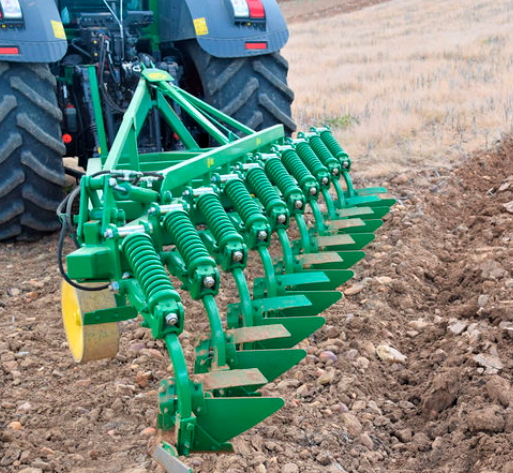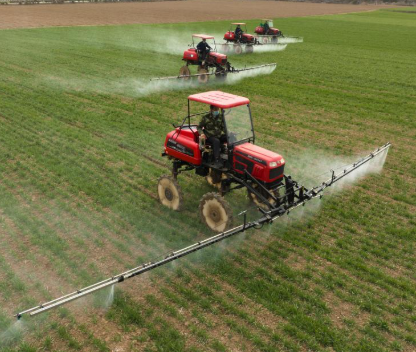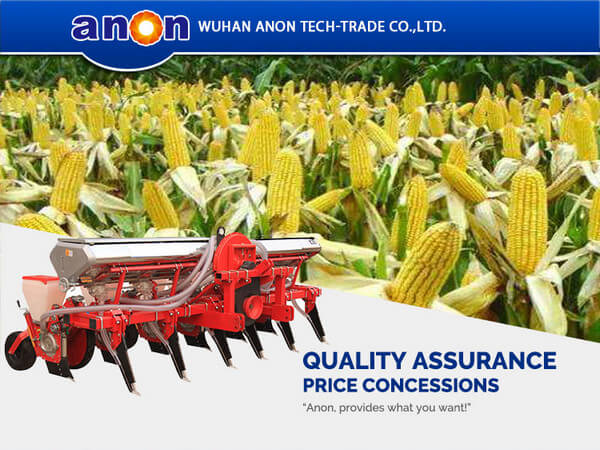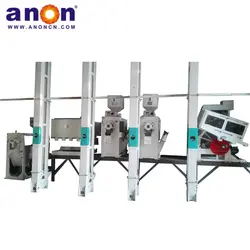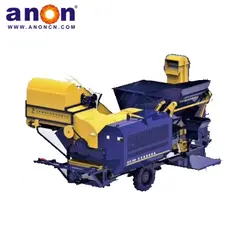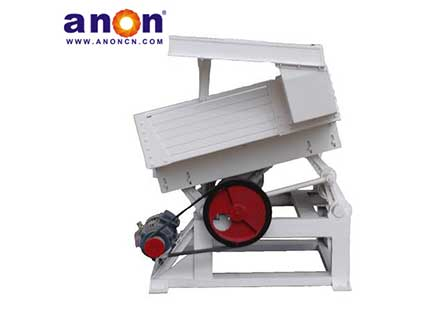Introduction
What do tractors do in modern society? They’re like the Swiss Army knives of agriculture. They almost do a little bit of everything!
You can see them at every stage of the farming process, from soil clearing before sowing to transportation after harvest. They can help farmers do their field work faster and better.
In this article, we will use our expertise to introduce you to all the important aspects of tractors.
Want to learn more? Come and dive deeper into the world of tractors!
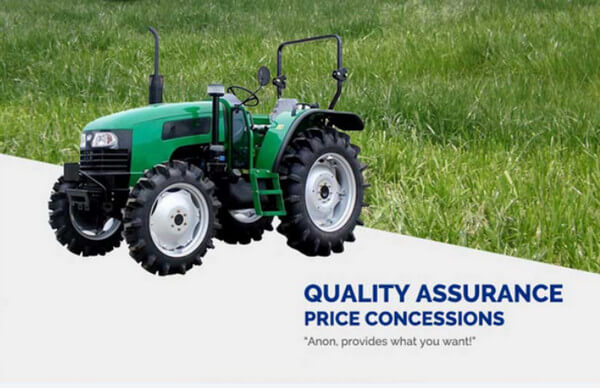
What is a Tractor
Tractors are indispensable mechanical equipment in the fields of agriculture and construction. Their mechanical structure is similar to that of cars or trucks.
However, the tractors’ functional design is very different from the previous two vehicles. What do tractors do? It is specifically designed to provide high power at low speeds. This feature allows the tractor to lift, pull, and push heavy objects with ease, making otherwise difficult jobs much easier.
The tractor is also a versatile off-road vehicle that can connect many different machines. Through the connection of different tools, it can also perform a lot of tasks, such as farming, sowing, fertilization, and so on.
Although tractors are often considered agricultural equipment, their durability also makes them important in the construction industry. Then what do tractors do in agriculture? People often use it for different kinds of tasks, such as excavation, transportation, and ground leveling.
Also, the core function of a tractor is to provide high traction or torque. That will make it ideal for propelling a trailer or other mechanical equipment.
Therefore, a tractor can save you a lot of time and energy, whether you are in agriculture or construction. This machine can help people improve efficiency and reduce the workload greatly.
Important Parts of a Tractor
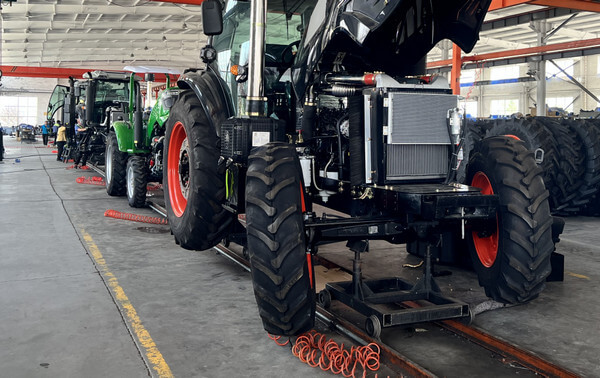
A tractor usually consists of the following major components:
Engine and Fuel System
What do tractors do with engines and fuel systems? Similar to the engine of a car, the engine of a tractor is also its power source.
The fuel stored in the tank is used by the internal combustion engine to produce mechanical energy. And in turn, the energy drives the tractor to provide power.
The fuel system, on the other hand, provides the continuous transport and supply of fuel for power generation.
These two systems are important parts of generating and maintaining power. So that the tractor can continuously perform its efficient work.
Cooling System
The cooling system of tractors usually adopts liquid cooling. The system is mainly composed of the radiator, water pump, and coolant. In a liquid-cooled cooling system, the coolant circulates and uses a radiator to remove heat.
This allows the tractor engine to maintain a normal operating temperature. Thus ensuring its long-term stable operation.
PTO and Hydraulic Systems
The PTO unit and hydraulic system are two important functions. What do tractors do with those two parts? They provide power and control to the accessories of the tractor.
The PTO is used in conjunction with the gearbox of the tractor. Then it can transmit power to the external equipment carried. This also makes the tractor more flexible and versatile. Thus, they will adapt to different agricultural activities and construction tasks.
The hydraulic system transmits the force through the pressure of the hydraulic oil. Then, it can make the attachments perform all the lifting, steering, and other functions.
Attachments
The versatility of tractors lies in their ability to be equipped with all kinds of attachments and utility tools.
These accessories include harrows, plows, lawnmowers, etc., each with a specific function and use.
For example, the tractor can use plows to plow and ditch, and lawnmowers can be used to mow lawns or harvest crops. By using appropriate tools, tractors can quickly adapt to different working environments and tasks. This also shows its advantages of versatility and adaptability.
Types of Tractors
According to their applications, there are walk-behind tractors, wheeled tractors, crawler tractors, and boat-type tractors.
Walk-Behind Tractor
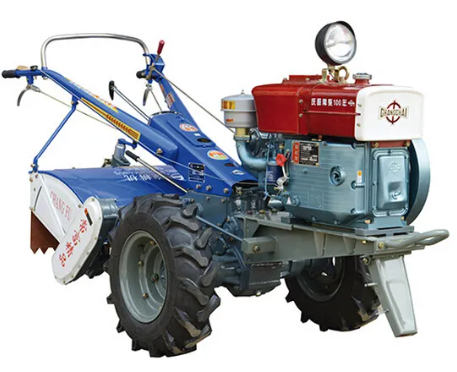
Walk-Behind Tractor
A walk-behind tractor is a small tractor made up of an engine, chassis, transmission system, walking system, steering system, braking system, and electrical system.
It is powered by a diesel engine and known for being compact, flexible, and powerful. The engine converts fuel into mechanical power, which is transmitted to the drive wheels through the transmission system. The friction between the tires and the ground generates a horizontal force that pushes the tractor forward. To steer, the operator changes the power distribution between the two drive wheels.
During operation, the driver holds the handlebars and uses the control system to steer, pull, or power attached implements. Walk-behind tractors are widely used in small fields, orchards, and hilly areas. They are popular for their simple structure, easy operation, and strong adaptability.
Wheeled Tractor
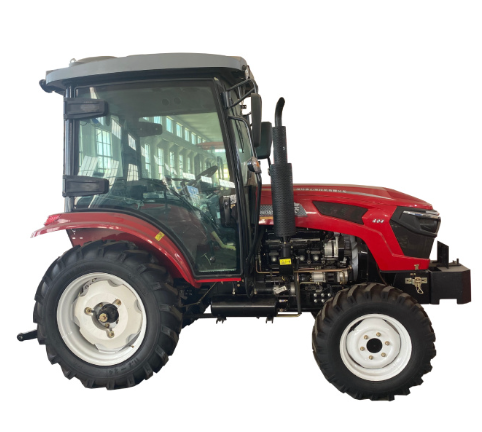
Wheeled Tractor
A wheeled tractor uses wheels as its driving system. It comes in two main types: rear-wheel drive and four-wheel drive.
A rear-wheel drive tractor delivers engine power to the rear wheels through the transmission system. Its main advantages include fewer transmission parts, a simpler structure, and lower manufacturing and maintenance costs. It is ideal for flat farmland.
A four-wheel drive tractor sends power to all four wheels. The engine power is distributed through the transmission system, which increases traction and performance. Four-wheel drive tractors provide better grip and mobility, especially on wet, muddy, or soft ground. However, they usually cost more and consume more fuel than two-wheel drive models.
Wheeled tractors use tires for movement, allowing them to turn freely and adapt to various terrains. They can easily pass through narrow paths and rough landscapes. Operators can control the tractor using just a few components, like the steering wheel, throttle pedal, and clutch. Maintenance is also easier—if a tire is damaged, it can be repaired or replaced quickly.
Crawler tractor
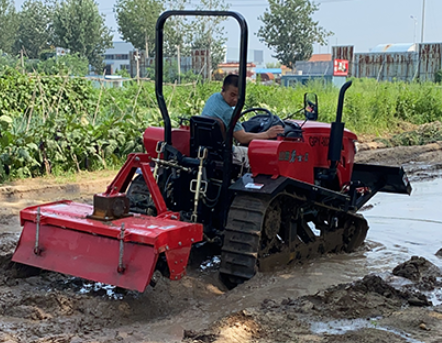
Crawler tractor
A crawler tractor is an agricultural machine that uses tracks, guide wheels, idler wheels, support rollers, and drive wheels as its moving system. It moves by generating friction between the tracks and the ground. During operation, the engine sends power through the transmission to the drive wheels. The drive wheels pull the tracks into continuous motion, creating backward force against the ground. In response, the ground provides an equal forward force to the tracks—this reaction force drives the tractor forward.
Crawler tractors have large contact areas between the tracks and the ground, resulting in lower ground pressure. This helps protect soil structure and reduces compaction. With a low center of gravity, they are more stable and provide greater traction than wheeled tractors. These features make crawler tractors ideal for heavy-duty work such as deep plowing and ditching.
Boat-type tractors
Boat-type tractors
A boat-type tractor, also known as a floating tractor, is a type of agricultural machine specially designed for paddy field operations. It is an innovation first developed in China. Due to the low soil bearing capacity in rice paddies, especially in deep, muddy fields, traditional wheeled tractors often sink, resulting in low work efficiency. The boat-type tractor solves this problem by using paddle-like driving blades that dig into the soil to push the machine forward.
The boat body has a large contact area with the ground and floats on the surface layer of the paddy soil, reducing sinking and rolling resistance. The machine glides across the field as the driving blades generate propulsion. This design allows the tractor to operate smoothly in fields with free-flowing water. It is particularly suitable for deep-mud paddy fields, offering high traction and efficiency, 2.5 to 3 times greater than that of a standard wheeled tractor. Its structure is simple, cost-effective, and highly maneuverable, making it an efficient and economical solution for paddy field farming.
What do Tractors Do
We have learned the significance and important parts of the tractor above. Next, we will talk about what tractors do in agriculture.
Land Cultivation
Before planting crops, you need to prepare the land by tilling the soil to create good conditions for seeding. At this stage, you can equip your tractor with implements like plows, harrows, subsoilers, or rotary tillers. These tools help you turn over the soil, loosen it, and improve its aeration. As the boat-type tractor I mentioned before, it can be used for paddy field operations and can be connected to disc plows, rotary tillers, etc., for plowing operations.
Planting Operation
After land preparation, it’s time to plant. A tractor can make planting much more efficient. By attaching seeders or transplanters, the tractor can help you complete many tasks in the field. With a tractor, you can easily handle seeding, transplanting, and planting your crops.
Fertilization and Spraying
These are the things you need to do after planting your crops. Tractors can be equipped with sprayers, fertilizers, and other equipment to help crops grow better. At the same time, tractors can also be equipped with other tools. You need to spray pesticides and herbicides. So that crops are in the process of growth, from pests and diseases.
Open Irrigation Canals
Crops also need to have some low-lying channels. These will help them drain water as they grow, so as not to rot. You can link your ditchers with your tractors. This tool will help trench fields and divert excess water. The tractor can also tow irrigation equipment to replenish water for the crops.
Harvest Operation
This is what you need to do after your crops are mature. You can use various machines, like harvesters, threshers, and balers, with your tractor. With these tools, harvesting, baling, and loading become much easier, helping you work faster and more efficiently.
Digging Harvest
For crops that require deep digging to harvest, such as potatoes and peanuts, a digging harvester is needed. Some digging harvesters require tractor-driven operation to complete the digging and harvesting process.
Beautify the Land
Tractors can also be connected to lawn mowers, graders, etc. Lawn mowers can help maintain the beauty of your lawn, trim weeds, or manage the growth of grass to make it healthier and more beautiful, while graders can be used for land preparation and road construction to ensure a flat surface for subsequent operations or to ensure safe and smooth movement.
Transport and Logistics
After you harvest your crops, you also need to transport them. At this time, tractors can be used to pull trucks or trailers to transport produce from the field to the processing plant or market. Also, tractors can perform the role of transporting agricultural tools and equipment.
Heavy Lifting
Because the tractor has a lot of torque, it can produce a lot of traction. The tractor achieves short-distance transportation of crops by matching front-end or back-end loaders. Equipped with movable arms and lifting tools, it also allows the tractor to complete heavy lifting projects.
Snow Removal
The tractor is also a master at snow removal. It can be equipped with various snow removal tools, such as a snow shovel and a snow blower. Working together, they can quickly clear your path, regardless of weather conditions, keeping your farm running smoothly.

Choose the Tractor that Suits You Best
It is important to choose a tractor that is best for you. You can mainly consider the following factors:
First, consider the size and topography of the field you own. It is more efficient to buy a high-horsepower tractor if the field is bigger. But for small plots of land or complex terrain, the use of small mobile tractors is more suitable.
Second, think about the main purpose of the tractor you are buying. Different tasks, such as farming, weeding, and growing medicines, require different attachments. Therefore, it is crucial to choose a tractor that can use a lot of different farm tools to improve efficiency.
Also, maintenance services are something you can not forget. Choosing a reputable brand is crucial when purchasing large farm tools such as tractors. Reputable brands have reliable repair services. This ensures that your machine is maintained on time. This reduces the time spent on farm work due to tractor breakdowns.
Finally, what is your budget and payment methods? You can look at your budget and calculate the price of machinery and transportation costs. A loan is also an option if your budget is not enough. Ensure that you take the formal platform trading because this will protect your rights and interests.
Conclusion
In a word, from this article, you must have a general idea about the important parts of tractors and what tractors do! Hope this knowledge will help you understand your tractor better. Or clarify the considerations before purchasing a tractor.
If you are interested in knowing more about tractors, please visit our website. We will try our best to answer your questions with our professional knowledge.
FAQ
What is the life expectancy of a tractor?
The average lifespan of a used tractor.
On average, a tractor can last up to 4,000 hours, or even as much as 10,000 hours, if properly maintained. However, it is important to note that as a tractor ages and is used, its performance may change.


